Installation in Hammond XB-2
(This page in english for int'l customers)
Installation in Hammond XB-2 may be performed by any skilled person within 1 or 2 hours; no soldering required. Please click on picture to enlarge. Please also regard Wiki HX-3 user manual on Bedienungshinweise#XB2-Nachrüstsatz (try Google translation service if you can't read german).
On the jack board, all outputs are mono. Leslie output jack carries internal leslie simulation, Main/Amp out carries audio signal for external Leslies or Leslie simulators. Both are routed through the internal Amp122 overdrive, controlled by the Amp122 gain pot. This is ideal for connecting transistor Leslies to get a warm tube distortion. Function of Amp122 pot is same as volume pot on Leslie tube amp chassis.
We recommend a volume swell/expression pedal like Yamaha FC-7 or similar. Sorry, you may not use your Hammond swell pedal anymore.
Remark 1: Early XB-2 do not have the "Reverb" pot on right (and no built-in reverb, either), so there is no "Amp122 gain" pot after installation (one 5-pin header and 8-pin header on output jack board remain open). To try out the Amp122 gain function without the Amp122 pot installed, you may remove the jumper "RevPotToLeslVol" on jack board and put it on position "ModWhToLeslVol". You now control the Leslie and Amp122 volume gain (and therefore overdrive behaviour) with the modulation wheel.
Remark 2: You may change the Main output to clean organ signal by moving a jumper on jack board: "Amp122toOut" (default) routes the Amp122 simulation to output jack and 11-pin Leslie plug. If you remove this jumper an set it on position "MainToOut", you will get the clean organ signal on output jack and on 11-pin Leslie out. The clean signal is NOT affected by the Amp122 pot.
This page covers the new HX3 mk3 retrofit kit for XB-2 with stereo Leslie simulation. For older kits (no longer produced), see here: Installation in Hammond XB-2 (old HX3 kit) Use for reference only!
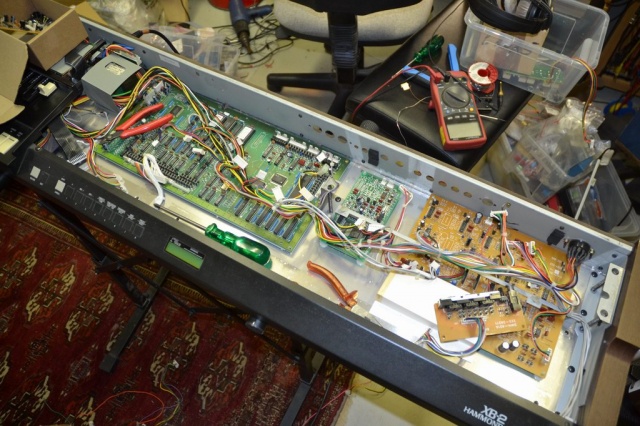
Open XB-2 by loosening 5 big screws on bottom. Remove keyboard by loosening 7 medium sized black and brass screws on bottom and inside organ. Disconnect keyboard from mainboard plug connector. Remove nylon wire straps on cable harness, but DO NOT cut any cables, just unplug all connectors! Keep MIDI jack board. All other XB-2 boards may be discarded (or sold for big $ on ebay). 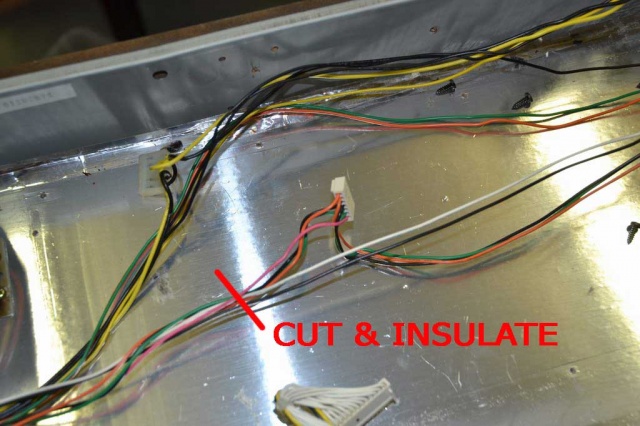
Remove all boards inside including supporting rails. Retain cables and headers from power supply, front panel, drawbars, LCD and volume/reverb pots. Locate pink/black/green/orange strain and separate black/white strain to now unused connectors. Obsolete XB-2 power connectors may be cut off as pictured here or may be left open and tied up securely (see next picture). Insulate cut wires with shrink tube. DO NOT cut long orange/black/green/black/yellow cable! 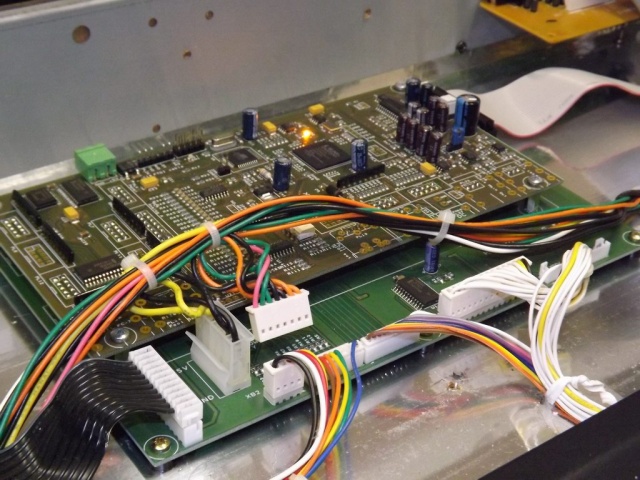
Install large HX3/XB-2 mainboard as pictured using wood screws and 5mm plastic spacers supplied with kit. Connect drawbar, large 5-pin power plug, LCD and button cables to matching connectors on LCD interface board as pictured. Connectors are all different size and cannot be confused. Obsolete power connectors may be left open and tied up with wire straps. Re-install keyboard and connect to 15-pin header on HX3/XB-2 mainboard (right side). Be shure not to pinch any cable. 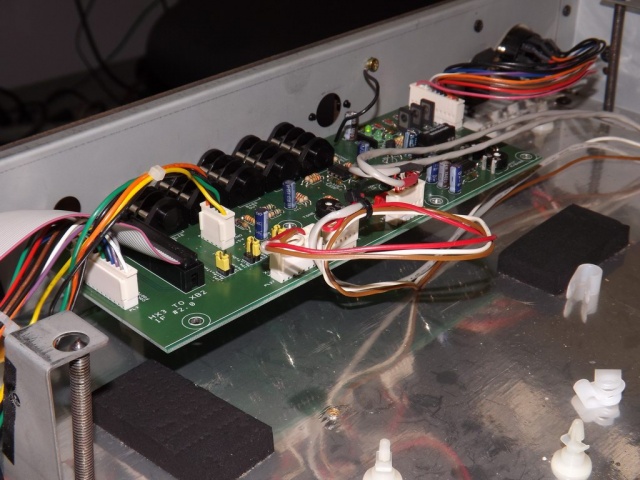
Install new jack/preamp board board as pictured. Re-install MIDI jack board and connect to jack/preamp board's 12-pin header. Connect long orange/black/green/black/yellow cable to matching 5-pin header on jack board. Connect Leslie 11-pin connector to matching header on jack board (right side). Connect gray and red/brown/white cable connectors to matching headers on jack board (see remark 1 above). Connectors are mostly different size and cannot be confused. Connect 26-pin flat ribbon cable to HX3/XB-2 main board and jack board. 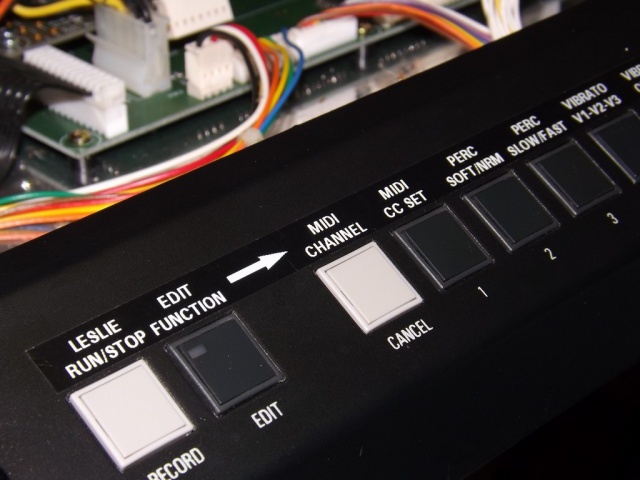
Re-install MIDI jack board and connect to 12-pin header on HX3 jack board, left side. Attach decals and lettering on front and back of organ. Note for alignment: Headphone jack is on same position as before. Plug in organ and test all functions. Re-install top lid. Now you're done! 



